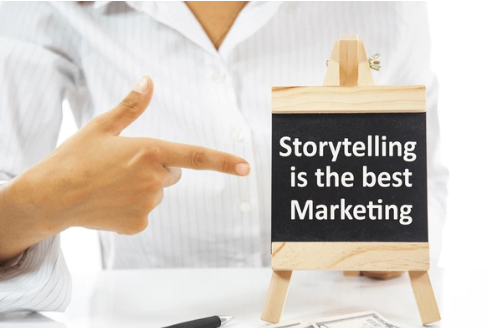
Why Storytelling Is the Future of Branding
Branding today goes far beyond logos and taglines—it’s about weaving powerful stories that connect emotionally with your audience. The most successful brands don’t just sell products; they sell meaning, purpose, and experiences that inspire loyalty.
In this article, discover why storytelling is the most effective branding tool, how top brands use narrative strategies to stand out, and actionable ways you can use storytelling to elevate your brand identity and boost visibility online.
Introduction
Why Storytelling Is the Future of Branding
Branding today goes far beyond logos and taglines—it’s about weaving powerful stories that connect emotionally with your audience. The most successful brands don’t just sell products; they sell meaning, purpose, and experiences that inspire loyalty.
In this article, discover why storytelling is the most effective branding tool, how top brands use narrative strategies to stand out, and actionable ways you can use storytelling to elevate your brand identity and boost visibility online.
The Science Behind Storytelling in Branding
Human brains are wired for stories. Neurological studies show that stories activate multiple regions of the brain, particularly those associated with emotion and memory. This is why people are more likely to remember a compelling brand story than a set of product features.
A well-crafted brand story follows a classic narrative arc:
- The Beginning (Challenge or Purpose) – The brand identifies a problem or mission.
- The Middle (Journey and Struggles) – The brand overcomes obstacles, iterates, and evolves.
- The Resolution (Success and Impact) – The brand delivers on its promise, transforming the industry or the consumer experience.
This structure taps into the human tendency to connect with characters, struggles, and resolutions, making branding a relatable and immersive experience.
Case Studies: How Global Brands Use Storytelling
1. Apple: The Story of Innovation and Rebellion
Apple’s brand story is not about selling technology but about challenging the status quo.
- From the 1984 Super Bowl ad to Think Different, Apple consistently crafts a narrative where it stands as the visionary, pushing creativity and human progress forward.
- The result? Apple has one of the most loyal customer bases globally, with users emotionally invested in the brand’s philosophy.
2. Airbnb: Selling Experiences, Not Just Stays
Airbnb transformed travel by shifting the focus from lodging to human connection and cultural immersion.
- Instead of advertising properties, Airbnb markets real guest experiences through campaigns like “Belong Anywhere.”
- Their user-generated storytelling strategy builds trust, showcasing how travellers find home-like comfort in new places.
3. Nike: The Story of Determination and Excellence
Nike’s brand narrative is anchored in perseverance and human potential.
- “Just Do It” is not just a tagline—it is a rallying cry for athletes and dreamers.
- Nike campaigns like “Find Your Greatness” amplify personal success stories, allowing consumers to see themselves as part of the brand’s mission.
Practical Ways to Integrate Storytelling into Branding
Define Your Brand’s Core Narrative
Ask yourself:
- Why does your brand exist beyond making money?
- What problem does it solve?
- How has it evolved?
The answers form the backbone of your brand story. Consumers should instantly recognise what your brand stands for.
Use Customer Stories and Testimonials
People trust real stories over corporate messaging. Feature case studies, user-generated content, and testimonials that highlight real-world impact.
Create Consistency Across Touchpoints
Brand storytelling should be reflected in the following:
- Website copy & brand mission statements
- Marketing campaigns & social media content
- Visual identity & packaging
Every touchpoint should reinforce the brand’s narrative, making it instantly recognisable.
Engage Through Video and Experiential Campaigns
Visual storytelling is one of the most effective ways to create emotional engagement.
- Utilise short-form video content on social media (Instagram Reels, YouTube Shorts, TikTok)
- Create behind-the-scenes videos showcasing company values and culture
- Use immersive brand experiences (events, collaborations, interactive content) to bring your narrative to life
Key Takeaways for Marketers
- Stories build emotional connections. Facts and features alone do not create loyalty—stories do.
- A brand without a story is forgettable. The most iconic brands have narratives that make them stand out.
- Customer experience is part of the story. Every interaction should reinforce the brand’s identity and values.
- Authenticity is crucial. Overly polished, inauthentic storytelling backfires. Consumers value genuine, human-centric brand narratives.
Conclusion
A strong brand is more than a name and a product—it is a story people believe in, connect with, and champion. Whether you are a startup or an established brand, mastering storytelling is the difference between being another business and becoming an iconic brand.
Looking to refine your brand’s narrative? Let’s talk.
Shape Your Brand’s Story



